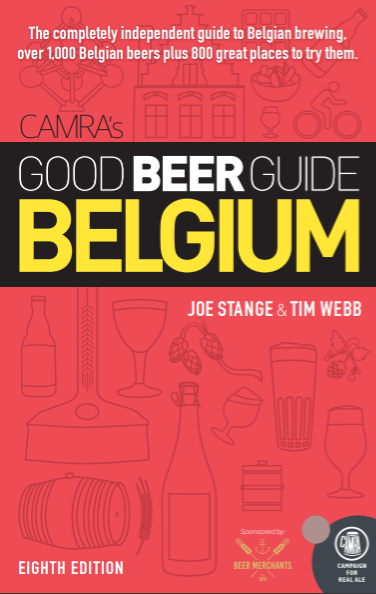 Depending on where you live, the label on a bottle of beer may or may not tell you how much alcohol is in the container. How useful or important is that information to you?
Depending on where you live, the label on a bottle of beer may or may not tell you how much alcohol is in the container. How useful or important is that information to you?
Should the government require all breweries, large and small, to put that information on a label? What about a restaurant or bar menu?
Does making that information obvious lead to "strength wars," where breweries compete for the business of those who want the most bang for the buck? (And might that explain the boozy trend we've seen in craft beer over the past several years?)
Your thoughts would help me improve an upcoming magazine article. I'd love to hear some different views on those or any related issues.
Pictured: The Belmont Station beer shop in Portland, Ore.
Monday, June 13, 2011
What Should the Labels Tell You?
Subscribe to:
Post Comments (Atom)






beyond the marketing guff, I think all labels should have the abv and ingredients clearly and precisely labelled.
ReplyDeleteI agree that ABV should be on; the TTB usually makes a brewery write ingredients when it's not the four major ones (e.g. "ale brewed with blueberries"). As a homebrewer, I'd love to see what hop and malt varieties are used, but I understand why they may not always want to share that.
ReplyDeleteI don't think that's behind the ABV/IBU arms race we've seen lately; people in any niche, particularly a young one like craft beer, are naturally drawn to extremes, and I don't know any serious beer drinkers who pursue a straight booze-for-the-buck strategy when buying beer.
As for menus, I think the restaurant/bar has a responsibility to tell you how much abv a beer has, and how much it costs (do not laugh... I know several good craft beer places that make you ask or risk seeing a huge number you didn't expect on your tab) before you order it.
From a design standpoint (since that's what I write about), I think breweries should use the label to depict something about the character of the beer. With all these breweries, we have to make more and more decisions based on first impression, and just throwing a picture of a hop on the label doesn't do it anymore.
From a UK perspective it seems bonkers not to have the ABV as a requirement on a bottle of beer or pumpclip. In my view, it enables people to judge their choice of beer or rate of drinking more sensibly for the day/evening.
ReplyDeleteRe strength wars: BrewDog stunts excepted, a lot of UK drinkers will go for the session option and choose something with a "sensible" ABV of something like 3.5-4.7%. Whether that's a result of printing the ABV, or if the information being readily available just assists in the choice, is another question.
Nick
Tonight I drove to a friends house in the UK. I selected a bottle of beer from the local offy, knowing it was 4% and i'd be fine to drive home after. If no abv info was available, then without prior geeky knowledge, I may not know if I'm picking a 4% or 9% beer. It would also help to gauge the number of beers someone can drink knowing they will be fine to get up the next day for work.
ReplyDeleteIt's very important to a lot of customers in our shop. We have had US beers in the shop before with no ABV on the bottle, but we looked them up on Rate Beer and wrote it on the shelf tickets. Before we did that a lot of people would put them back without knowing how strong they were.
ReplyDeleteThe optional ABV thing they have in the States seems barmy to me - and I wonder if it's accelerated the drift towards ever-stronger skull-splitters that seems to have been going on lately, since people get used to assuming that "a beer" (or "a stout" or "an IPA") is going to be around a certain strength, and some will feel let down if the strength is lower than they expect.
ReplyDeleteBeyond that, I think a pump clip should definitely say (or hint) what broad style something's in - there are any number of adjectives with strong style connotations, but if the brewer's chosen to eschew all of those and go for something 'creative', it's only fair to tell the punter that (say) Catachresis is a pale bitter and Anacoluthon is a dark mild (Abbeydale, I'm looking at you!).
Whether is mandated by the government or not, the more information brewers put on the labels, the better informed choice the consumer can make. Of course, much of it might be cryptic for most people, but I reckon that with time more and more consumers will learn to interpret it, just like it's happened with wines in some markets.
ReplyDeleteAs for the "ABV wars", unfortunately, many people believe that the quality of a beer is in direct proportion with the % of ABV, and that is not going to change any time soon.
It makes no sense to have a government warning about alcohol and then not tell you how much alcohol is in it.
ReplyDeleteInteresting... Some strong opinions from across the pond but not too many Americans weighing in yet.
ReplyDeleteI have found craft beers from time to time that do not list abv on the bottle. Likewise with brewpubs that don't list it on their menus/chalkboards. But as far as I know the biggest perpetrators are the BMC "light beers," which are usually around 4.2% but content to allow customers think they are the usual 5% or 5.5%... lest the drinker find out they are getting less bang for the buck.